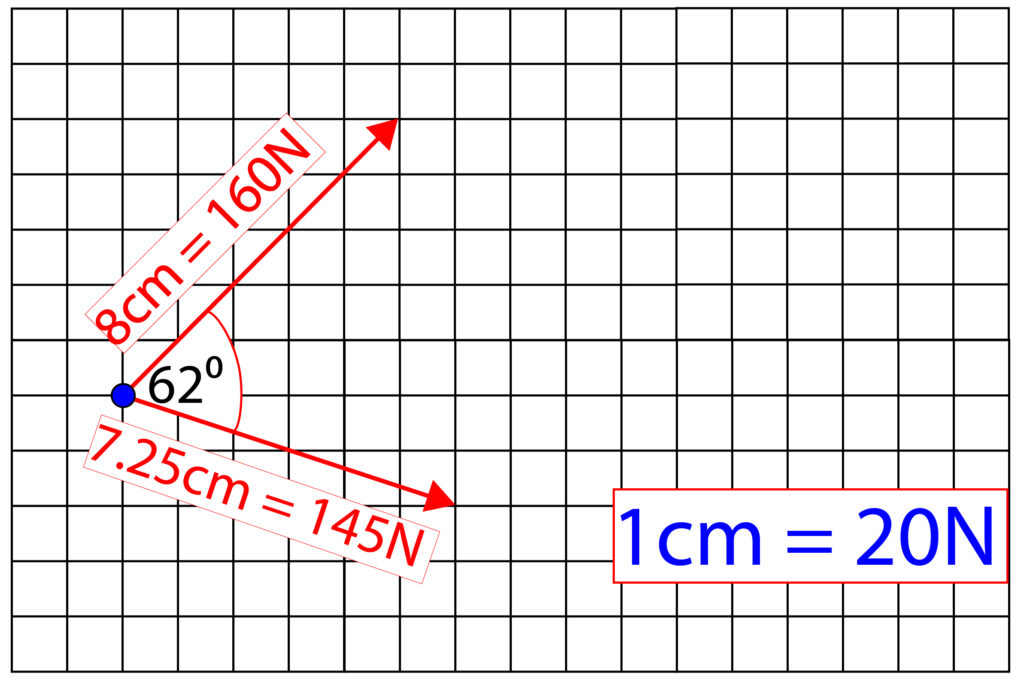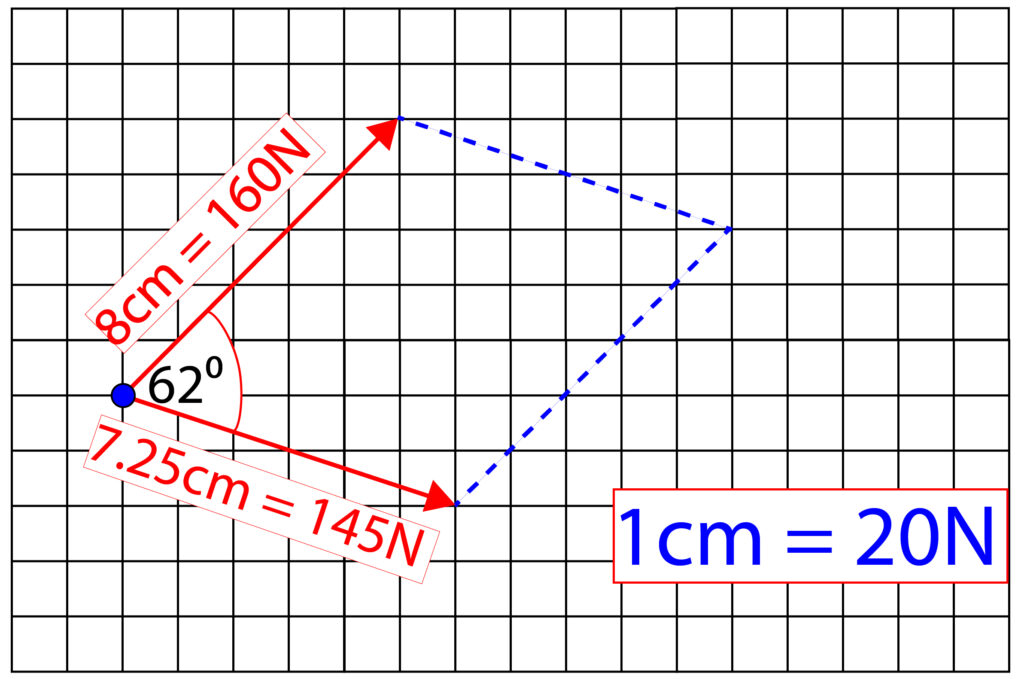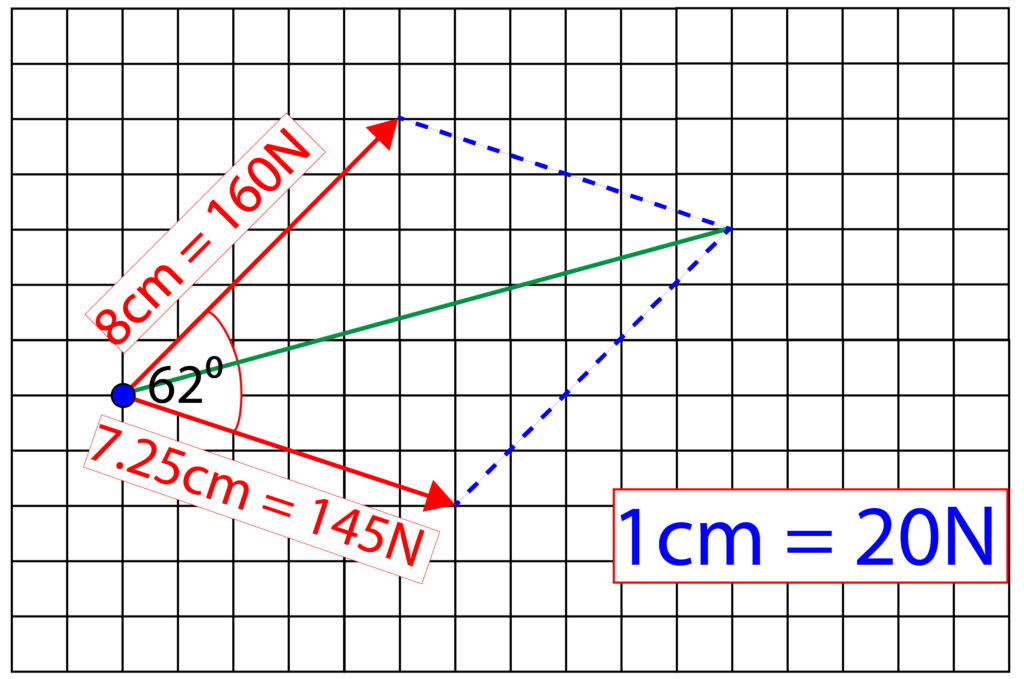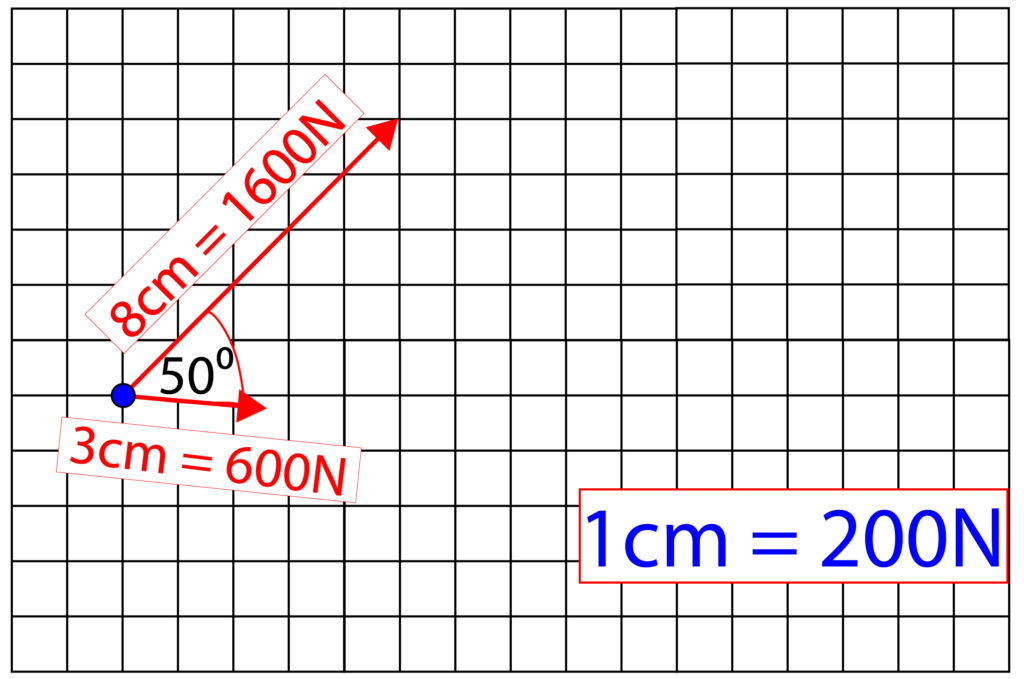AQA GCSE Finding the resultant force, using the parallelogram rule(Physics)
Finding the resultant force, using the parallelogram rule
We can use the parallelogram rule to find the resultant force of two forces that do not act along the same line.
Lets look at an example:
An airplane that has a forward thrust force and it is experiencing a sideways cross wind force which pushes the airplane side ways. As a result the plane will fly in a diagonal direction.
We can use the parallelogram rule to work out the resultant diagonal force using the forward thrust force and sideways wind force.

Now we need to draw two parallel lines to form a parallelogram, as shown below.

Now draw a diagonal line from where the forces originate to where red lines meet as shown below.

These are all based on scale drawings. We will assume each square is 1cm.
The wind force 500N = 2 squares long = 2cm.
This means that 1cm = 250N.
Now measure the purple line. If the purple line is 8.25cm, then it is 8.25cm x 250N = 2060N as a resultant diagonal force.
Please NOTE on your screen the length of the arrows will not match due to the screen resolution. If you draw this out on a piece of square paper, then you can follow with the example.
Another example
Two men are trying to pull a weight along the ground. One man pulls with a force of 160N, this is represented by a line of length 8cm. The other man pulls with a force of 145N, this is represented by a line of 7.25cm. The angle between the men is 62 degrees.
Please NOTE on your screen the length of the arrows will not match due to the screen resolution. If you draw this out on a piece of square paper, then you can follow with the example.

We need to calculate the resultant force.
The first step is to measure the force arrows, in this case, it has been done in the diagram above. However, often the questions have just the force written next to them.
This is so you can work out the scale. So, if one force arrow is 8cm = 160N, then 1cm = 20N.
Now, we need to complete the parallelogram as show below.

Now draw a line from the origin of the forces to where the blue lines meet as shown below.

Now measure this green line. On our diagram it is 12.5cm. Using the scale of 1cm = 20 N, 12.5cm = 250N.
On the next page we will show you how to deal with the model zip line questions, which can be tricky!
Practice Questions
1.State what the parallelogram rule is used for
2. A golf ball has a forward force in an easterly direction of 400N. Whilst the golf ball is moving, a cross wind in a southerly direction of 150N acts on the golf ball. Using the parallelogram rule draw a diagram to show this and calculate the resultant force.
3. Two tug boats pull a larger boat forwards. The first tug boat uses a force of 1600N, whilst the second uses a force of 600N. The angle between the tug boats is 50 Degrees. Draw a scale diagram to show this and using the parallelogram rule, calculate the resultant force.
A diagram has been placed below to help you visualise question 3.

Absorption and Emission of EM Radiation
JJ Thomson and Plum pudding model
Ernest Rutherford and the Nuclear Model
Niels Bohr changing the Nuclear Model
Discovering the Proton and Neutron
Measuring radiation from radioactivity
Radiation types and properties
Random nature of radioactive decay
Radioactive contamination or irradiation
Hazards of contamination and irradiation
Studies on the effects of radiation on humans
Different half lives of radioactive isotopes
Nuclear Fission Chain Reaction
Writing nuclear fission equations
Drawing ray diagrams for a concave lens
Drawing Ray Diagram to produce a virtual image for a convex lens
Drawing ray diagram to produce a real image for a convex lens.
Specular and Diffuse Reflection
Seeing Coloured Objects Part 2
Viewing objects through coloured filters
Transparent, Translucent and Opaque